Tuvalu 2011 (2)
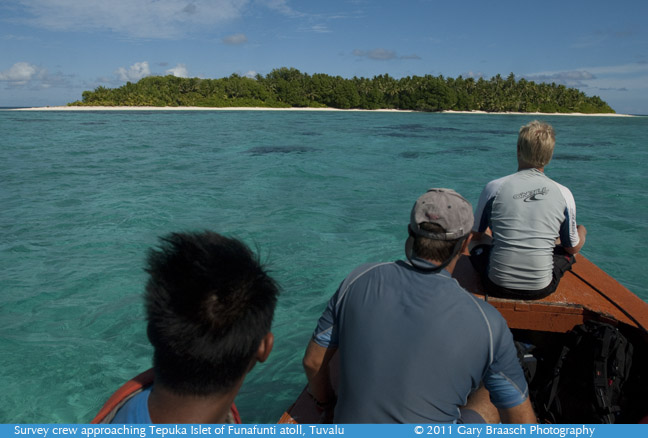
What is the fate of ocean atolls in an era of rapid climate change? The assumption that they are fragile strands of coral with populations totally vulnerable to rising sea level is giving way to more complex scientific findings that atolls are dynamic; resilient and persistent landforms. Many island peoples of Oceania are threatened by climate change; but their islands must be studied individually to know the danger and react to it. Paul Kench; geomorphologist; and his students are in Tuvalu to survey low-lying islands and neighborhoods.
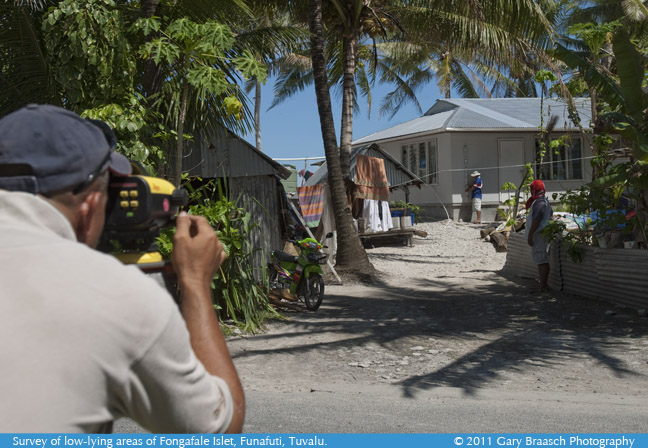
Funafuti Atoll and its main island of Fongafale, capitol of Tuvalu and home to about 5000 people, formed about two thousand years ago. It has survived many cyclones and wave overwashes, including the huge Cyclone Bebe of 1972 -- which threw up a 4 to 6 meter high ridge of coral rubble along the ocean side, adding to the island. But the interior of the island is lower, some only 2 meters above sea level, subject to tidal flooding. Paul Kench and colleagues are surveying to map the most vulnerable areas.
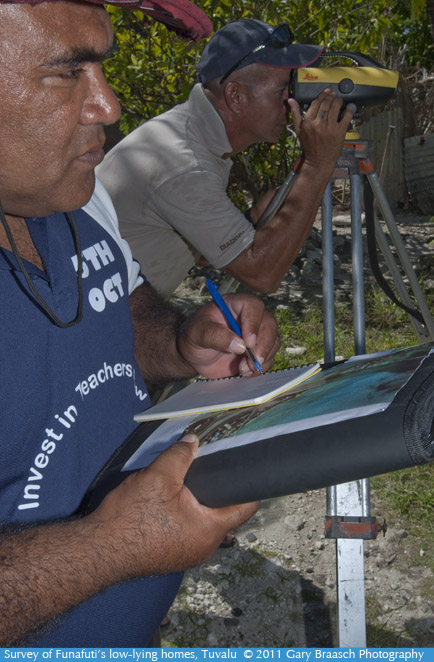
In a survey of South Fongafale, Tuvalu, Red Cross climate and disaster manager Tataua Pese works with Alan Resture of the University of Auckland. The team used a Google Earth image of the island to map each house and its elevation. This particular area is vulnerable to tidal and storm flooding which can only get worse as sea level continues to increase at a currently accelerating rate.
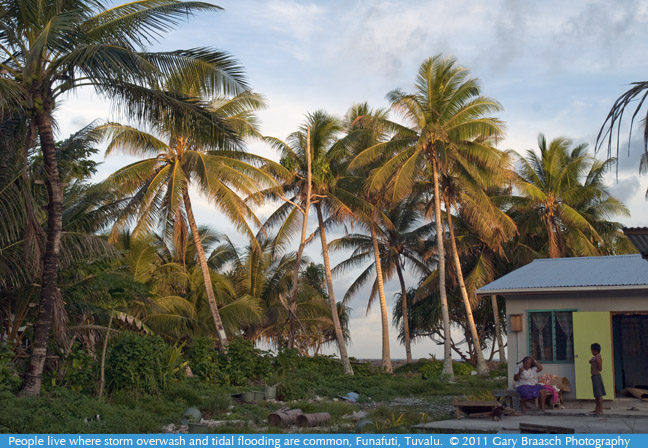
A home in TeKavatoetoe, South Fongafale, where the elevation is 3.3 meters above zero sea level. In October 2007 strong winds and waves flooded over the ridge and water was waist deep. Paul Kench's study of atolls indicates that they face "very severe environmental challenges. The flooding of islands is going to become a more frequent prospect for island communities… Many of these communities are already facing quite severe flood issues."
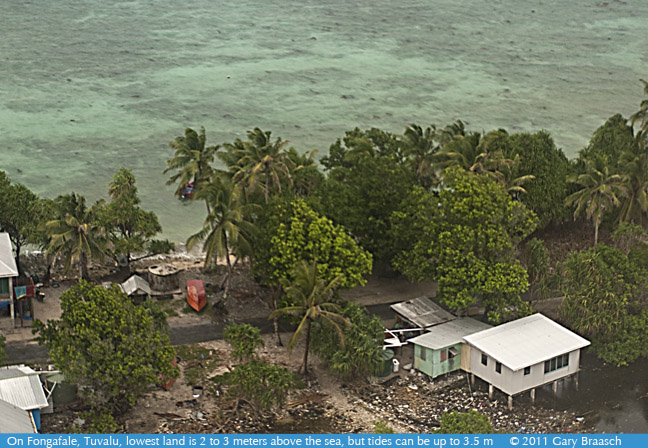
The islet of Fongafale in Funafuti atoll in Tuvalu is ringed by ridges of coral debris deposited by storm waves. The island has persisted for about two thousand years, and recent studies by Paul Kench and colleages suggest atolls like it can move and grow as sea height changes. But the interior of this island is a shallow basin-- in the past some of it was a coral-filled lagoon and other parts a mangrove swamp. Some of this was filled in during WWII. With high population growth since the 1970s, many people have found land only in the low areas, like the wet area at lower right of this photo, rather than along the higher ridge on the lagoon.
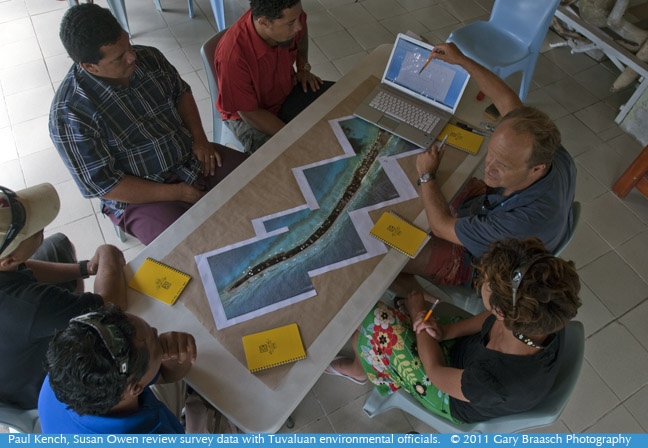
After a series of surveys, Paul Kench and Susan Owen of the University of Auckland meet with Tuvaluan Red Cross, NGO, and Environment Department officials. Each house is now mapped with its elevation relative to expected high tides, and Tuvalu may now plan more carefully for flooding emergencies -- as well as where and how houses are built. Kench says they "are trying to create a rapid assessment tool which islands can use to quickly gauge the vulnerability of specific areas. Now we can quantify the number of houses and structures that will be affected."
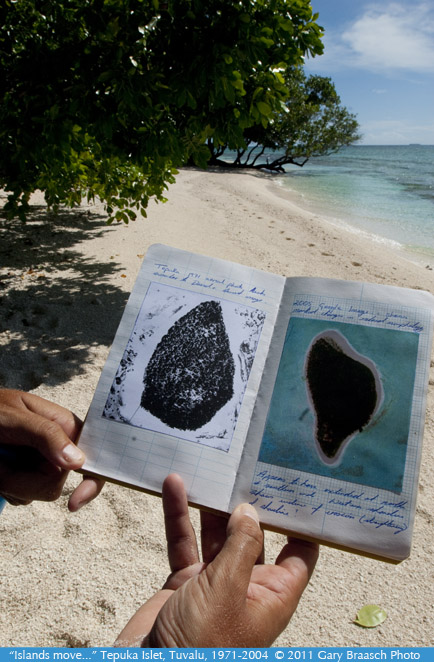
Dr Paul Kench, geomorphologist of coral atolls, and his colleages created a stir -- and reality check -- in the discussion of climate change vulnerability in 2010 by challenging the assumption that all islands were static piles of coral which would erode under rising sea level. Their study of 27 atoll islands in the central Pacific showed that 86 percent remained stable (or increased in area over recent decades of sea level rise. Here he shows the change in shape of the tiny islet of Tepuka across the lagoon from Fongafale, Funafuti Atoll, between 1971 and 2005. Although changing shape, the islet is persisting although only a few meters high.
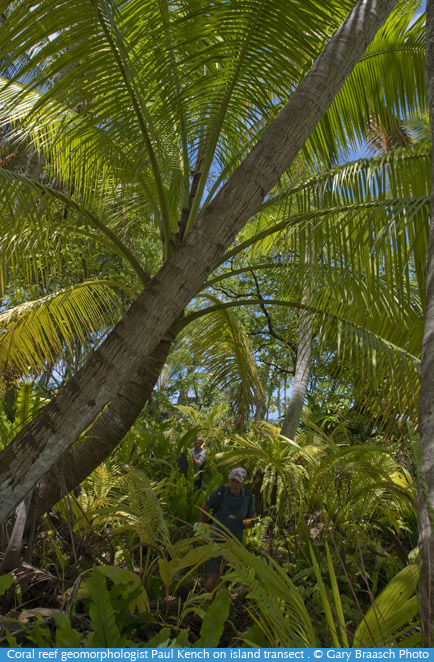
Dr. Kench and a student follow a GPS survey transect across Tepuka islet in Tuvalu, to auger a series of core samples in the coral, foraminifera and coralline algae which form it. Kench's 2010 study of island resilience and persistence was based only on their area, using aerial and satellite views. But Islands can also grow vertically when storms and tsunamis overwash or throw up coral rubble.
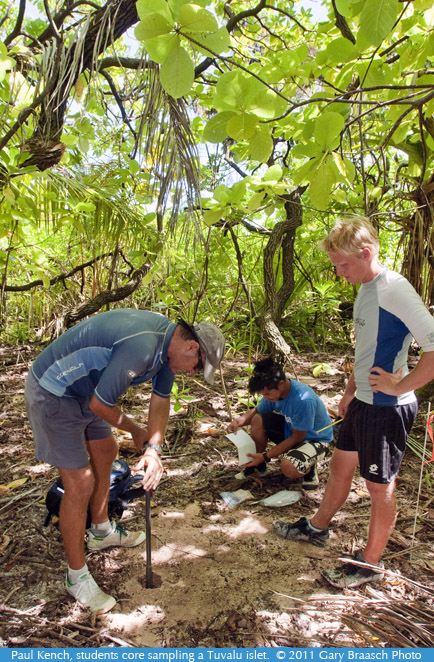
On the tiny Tepuka islet in Funafuti Atoll, geomorphologist Paul Kench and students auger a series of cores to 3 meters deep, to map the history of growth and change of the island. Kench says the assumptions and assertions made over the past few years about low lying islands are misleading. Islands "are dynamic features... there is this constant reajustment going on between sea level and wave processes, and islands." He says, "It would be nice if we could migrate away from the idea that all islands are going to vanish, and start thinking a bit more critically about how they are going to change in the next 100 years or so....islands are entering a phase of more rapid change."
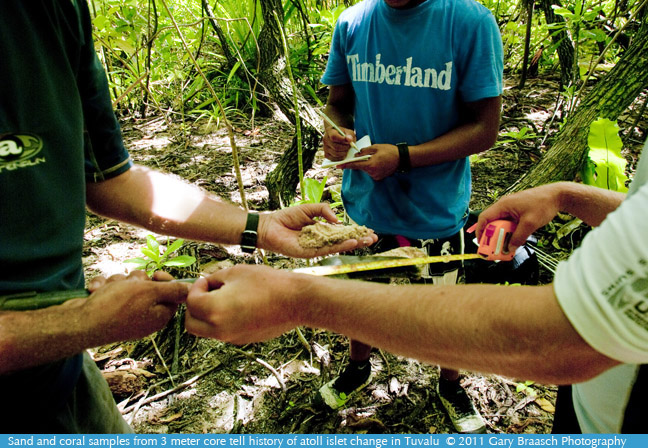
The tools of geology at work to map the history of an atoll -- core sample, measuring tape, notebook and sample bags. The study of this islet in Funafuti is relatively simple compared with larger islands with large populations, but the conclusions of his research point in the same direction: "On the ground we see that each island is different, each has different levels of development and economic uses, and therefore their levels of vulnerability differ."
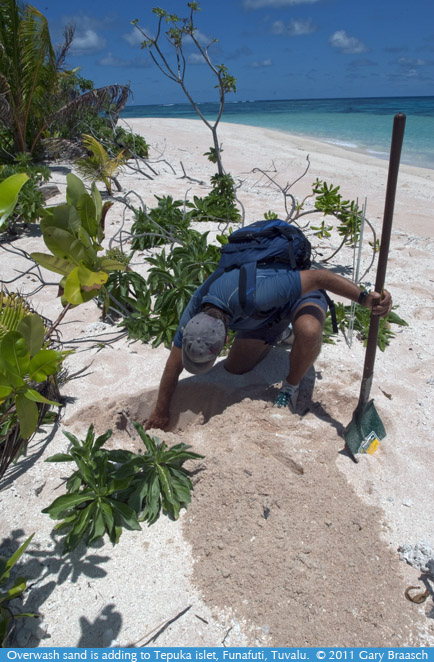
Paul Kench digging along a section of Tepuka Islet in Tuvalu which is being added to by ocean and tide processes. Storms wash in wave after wave of new material, creating layers easy to see -- and providing habitat for new coconut palms and other plants. Other sections of this island shore are eroding, part of the dynamic between islands and the sea.
1. Tuvalu, tiny atoll nation of the Pacific
2. The fate of islands as sea level rises
3. Tuvalu high tide kids, six years later
4. King high tides flood parts of Tuvalu Part 1, Part 2
5. People and stories of Tuvalu
6. A Garden Grows in Tuvalu
7. Kiribati
8. Solar Power for Small Islands
9. A Village in Fiji
10. Measuring Carbon in Hawaii's Forests
COPYRIGHT NOTICE:
Photography and text Copyright © 2005 - 2017 (and before) Gary Braasch All rights reserved. Use of photographs in any manner without permission is prohibited by US copyright law. Photography is available for license to publications and other uses. Please contact requestinformation@worldviewofglobalwarming.org. View more of Gary Braasch's photography here.


